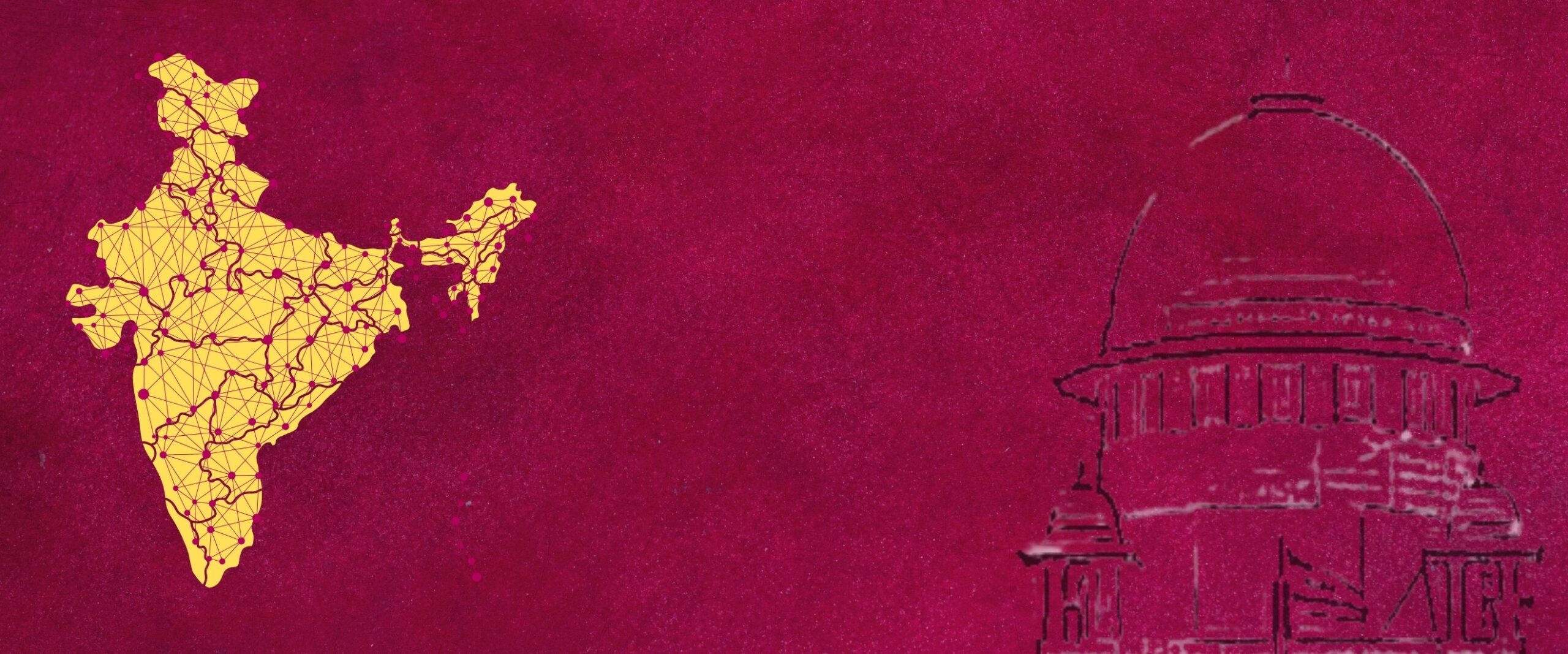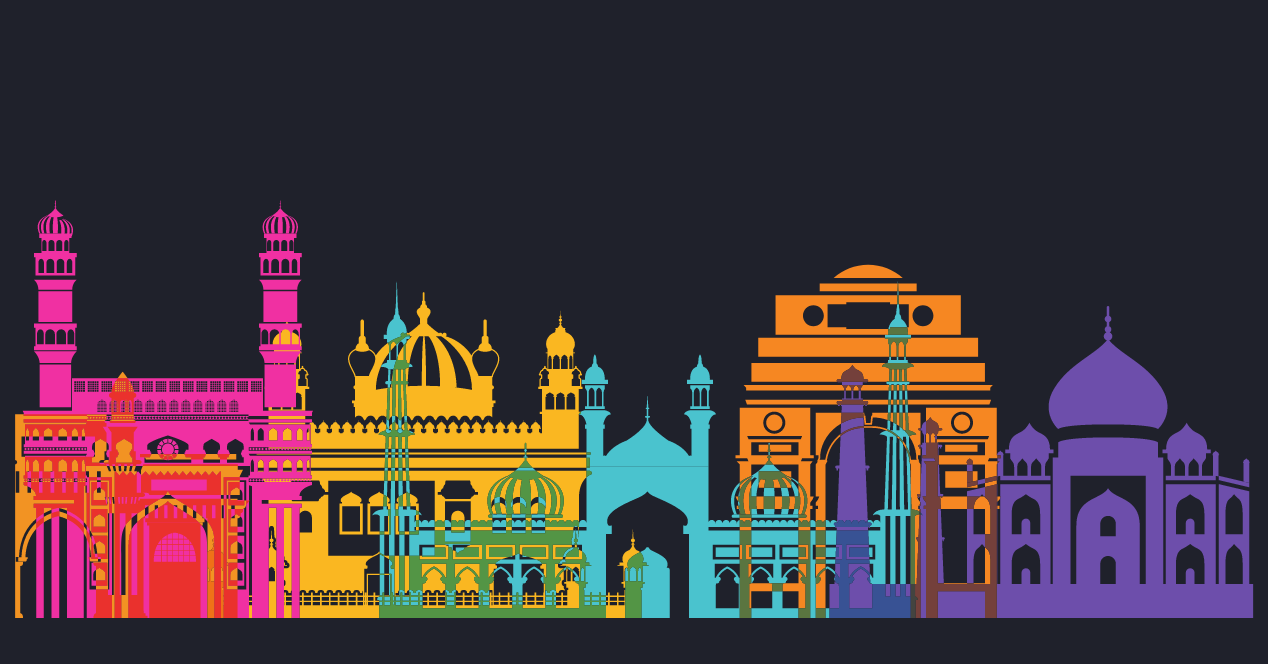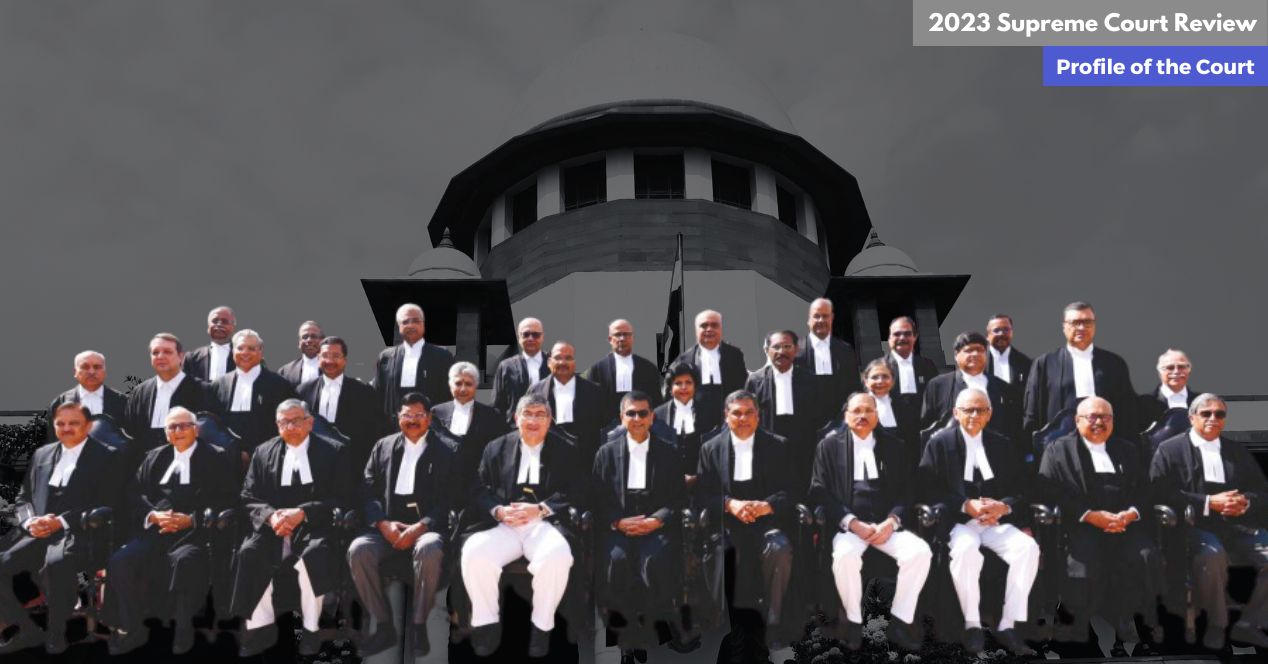Court Data
72% of all High Courts are represented in the Supreme Court
Seven out of 25 High Courts lack representation in the top court. This includes four north-eastern states, J&K, Orissa and Jharkhand

In August 2023 while welcoming the newly appointed Justices Ujjal Bhuyan and S.V. Bhatti to the Supreme Court, Chief Justice D.Y. Chandrachud said “The reason why we are a poly-vocal Court is because no two judges are similar. Here we have a judge from Maharashtra sharing the Bench with a judge of West Bengal to decide a matter from Haryana. This is the true essence of the Supreme Court of India. It is not a poly-vocal court. Rather, the Supreme Court is a people-centric court.”
Regional representation makes an appearance as one of the key criteria in the Collegium’s recommendation of judges. For this, the Collegium looks at a judge’s parent High Court—the High Court where they began their judicial career.
In this Court Data post, we map regional representation among the current cohort of judges sitting in the Supreme Court. 15 of the 34 judges were appointed by the CJI Chandrachud-led Collegium. The current cohort of judges at the top Court also includes two judges who were elevated directly from the Bar.
Assessing the adequacy of regional representation, however, has one crucial consideration. It is not as simple as ensuring that there is one judge from each High Court. This is because each High Court varies in size and has a different sanctioned strength (also called approved strength) of judges. For instance, the High Court of Allahabad boasts of a sanctioned strength of 160 judges, and the Bombay High Court follows with an approved strength of 94. In contrast, the Sikkim High Court accommodates three judges, followed by the Meghalaya High Court with four judges. Regional representation, therefore, may have a stronger footing with proportional representation in the Supreme Court.
18 out of 25 High Courts are represented at the Supreme Court
Figure 1 below traces the parent High Court of all the sitting judges of the Supreme Court and the number of judges directly elevated from the bar.
At the moment, 72 percent of all High Courts are represented at the top court.
Last year, the Delhi High Court(with a sanctioned strength of 60 judges), alongside the Allahabad High Court (with a sanctioned strength of 160 judges) was the most represented region with four judges. Justices S.K. Kaul, Sanjiv Khanna, S.R. Bhat and Hima Kohli hailed from Delhi. Justices Vikram Nath, Krishna Murari, Panjak Mithal and Manoj Misra hailed from the Allahabad High Court. However, after Justices Murari, Kaul and Bhat’s retirement in 2023 and Justice P.B. Varale’s appointment in January 2024, Bombay surpassed Delhi to be the most represented region. Chief Justice D.Y. Chandrachud along with Justices B.R. Gavai, A.S. Oka are the other judges who hail from the Bombay High Court.
The Karnataka, Allahabad and Punjab and Haryana High Courts stand second with three judges each. Justices A.S. Boppanna, B.V. Nagarathna and Aravind Kumar come from the Karnataka High Court (with a sanctioned strength of 62 judges). Justices Nath, Mithal and Misra are from the Allahabad High Court. Justices Surya Kant, Rajesh Bindal and A.G. Masih are from the Punjab and Haryana High Court (sanctioned strength of 85 judges).
Five High Courts have two judges representing them. The sanctioned strength is indicated in brackets. This includes the High Courts of Delhi (60), Calcutta (72), Gujarat (52), Gauhati (30) and Madhya Pradesh (53).
10 High Courts are represented by one judge each. These include Madras (75), Kerala (47), Chhattisgarh (22), Uttarakhand (11), Patna (53), Telangana (42), Himachal Pradesh (17), Rajasthan (50) and Andhra Pradesh (37).
Seven High Courts have no representation in the Supreme Court. This includes Jharkhand (25), Orissa (33) and the Union Territory of Jammu and Kashmir and Ladakh (17), Manipur (5), Tripura (5), and Meghalaya (4) and Sikkim (3).
The Supreme Court also has two judges elevated directly from the Bar—Justices P.S. Narasimha and K.V. Viswanathan. If the seniority principle is followed, both are in line to be future Chief Justices of India.
A decision involving many considerations
Typically, the Supreme Court Collegium reviews several factors including seniority, merit, caste, religion, gender and regional diversity in making its recommendation. The first and strongest criterion, however, is seniority.
The Collegium sometimes breaks the seniority norm to ensure there is more diverse representation. For instance, regional diversity was a strong consideration in recommending Justices S.V. Bhatti (Andhra Pradesh) and Sandeep Mehta (Rajasthan). In Justice Bhatti’s resolution, the Collegium held that his appointment would enable representation from the Andhra Pradesh High Court. In Justice Mehta’s recommendation, the Collegium noted “The Rajasthan High Court which is his parent High Court is a large High Court which does not have representation on the Bench of the Supreme Court.”
In an interview with the Supreme Court Observer, Justice S.K. Kaul explained that eligibility (of which seniority is the first clue) trumps considerations of diversity.
“...Sometimes in a particular cohort, there may not be a person whom we perceive is fit to come to the Supreme Court. So you wait till somebody is eligible,” he said. Justice Kaul was part of the Collegium for several years till his retirement in December 2023.




